Plants bring you close to the natural world and enhance the beauty and charm of your house. You can use flowering plants to decorate your house instead of using expensive decoration pieces for this purpose.
Indoor plants not only freshen your mind and mood but make your home fragrant. Indoor flowering plants may boost your productivity and make you more creative.
The other advantage of indoor flowering plants is that they can purify the air in which you breathe in. The sweet floral scent of flowers improves sleeping quality.
You can sleep well in the presence of plants such as lavender and Jasmine. Patients who are suffering from depression and anxiety can take advantage of flowering indoor plants. If you choose the right indoor plants then they will bring life to your lifeless interior.
Following are the 15 best flowering plants that can make your home divinely fragrant.
1- SCENTED GERANIUMS

This good-looking plant is quite different from other fragrant plants because of its scented foliage. The unique shaped leaves give a lovely aroma. Geraniums come in different fragrance categories such as lemon, mint, citrus, rose, orange, apple, and coconut.
Make sure you are using the high-quality potting mix for filling your pots for growing geraniums. You can add 20 20 20 water-soluble fertilizer to feed your geranium plants.
Geraniums need plenty of light for their growth. As an indoor plant, you have to keep it near a bright sunny window. If you don’t have a sunny place to keep your pot then you can also use grow lights for this plant.
When you see the soil in the pot is dry then water your plant. With the help of your finger, you can easily check the surface of the soil. On hot days your plant needs more water as compared to winter. The indoor temperature needed for growing geranium plants is between 65 to 70 degrees Fahrenheit or 18 to 21 degrees centigrade during the day.
The night temperature should be 55 to 60 degrees Fahrenheit or 13 to 16 degrees centigrade.
2- GARDENIAS

White lovely beautiful blooms with glossy dark green leaves of the gardenia plant will make your living area more attractive. If you provide favorable conditions to your gardenia plant then it will grow well indoors also.
The blooming season of this plant is from summer to fall. Acidic and well-drained soil is needed to grow gardenia plants. You can add peat moss, sand, and acidic compost to make your soil richer.
This plant needs 6 to 8 hours of sunlight daily. You should keep your gardenia plants near the south or south-west window. The suitable temperature for gardenias plants should be between 55 to 60 Fahrenheit or 13 to 16 degrees centigrade.
The cooler nights help to produce blooms of gardenia plants. Keep the soil moist but avoid overwatering because it will cause root rot. You have to maintain the frequency of water so your gardenia plants will be protected from over and under-watering.
3- INDOOR CITRUS
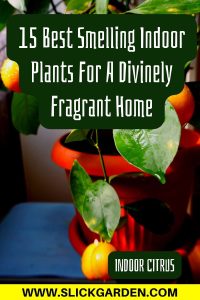
Citrus plants produce a fresh citrus scent in your indoor environment. There are different citrus plants such as orange, lemon, and lime. These plants add to the best smelling indoor plant and help to freshen the environment of your indoor area.
When you grow citrus plants inside your home they need perfect light, good humidity, suitable temperature, regular water, and well-drained soil. 8 to 12 hours of light is perfect for growing a small citrus tree. You should place your pots near a sunny window.
You can also use grow lights in case your plants are not getting enough sunlight. The suitable temperature for growing citrus trees is between 55 to 85 degrees Fahrenheit or 12 to 29 degrees Centigrade.
4- LAVENDER
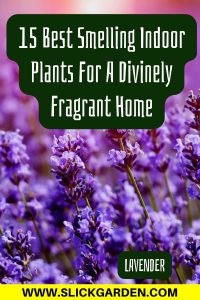
This plant not only looks good but the smell is also outstanding. You can grow smaller varieties of lavender plants in pots. For indoor growing, you can choose English lavender as it is the best choice because of its strong fragrance.
Fill your pot with high-quality potting mix and place it near the south-facing window so your lavender plant will get maximum sunlight. Lavender plants thrive well in warmth so in the winter season keep the room warm.
5- JASMINE
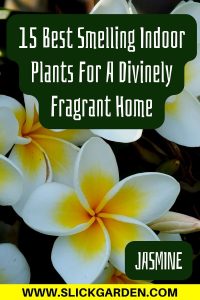
The sweet scent of the Jasmine plants makes your environment more fragrant. This plant blooms from spring to fall. Jasmine plants produce blooms if they get maximum sun exposure.
Place your pot in a sunny location so it will produce flowers during Spring and summer. You can make your soil richer by adding 20-20-20 fertilizer during the growing season.
When you see ½ inch of the surface of the soil is dry then it means your Jasmine plant needs water. This plant doesn’t like wet feet so avoid overwatering.
6- ORCHIDS

Due to the unique scent of the orchid plant, we added it to our list of best smelling Indoor plants. The best indoor daytime temperature for growing Orchid plants is between 70 to 85 degrees Fahrenheit for 21 to 29 degrees centigrade.
The lighting condition of orchid plants depends upon the variety you choose. Some varieties need low light, others grow well in medium light and some need a lot of light.
Your plants get all the required nutrients from the soil so make sure your soil should be rich in all organic materials. You can fertilize your orchid plants after every 2 weeks. The perfect fertilizer for adding is 20-20-20 because it is specifically designed for orchid plants.
7- LEMON BALM

The environment of your bedroom becomes fresh after the addition of the lemon balm plant. You should place the pot of lemon balm plant near and open the window so it will get fresh air and produce a lemon scent from its leaves.
Light is an important factor in the growth of any plant as it encourages the plant to grow thick and bushy. This plant loves to grow at a low temperature so keep it away from direct heat as it will burn the leaves of the plant.
Make sure you are using a commercial potting mix for growing lemon balm plants. Diluted 20-20-20 fertilizer is best for the lemon balm plant. The best time for fertilizing is in spring and summer to keep your plant more healthy.
8- SWEET OLIVE

The exceptional scent of white flowers and bright glossy leaves make the sweet Olive plant perfect for growing as an indoor plant. Make sure the pots you are using for growing your plants must have drainage holes at the bottom so your plants will be protected from root rot and other fungal diseases.
Choose a sunny location in your living area where your sweet olive plant gets enough light. When the sweet Olive plant reaches a height of 6 inches then it will start blooming and need regular water.
9- MINT

Although mint is not a flowering plant its leaves produce a fresh aroma. The addition of this plant will fill your room with a lovely scent. This herb enhances the taste of different dishes and drinks.
Indirect sunlight is needed for your mint plant and cool sunlight is perfect in the morning. The suitable temperature for growing mint plants is between 65 to 70 degrees Fahrenheit or 18 to 21 degrees centigrade.
10- LILLY OF THE VALLEY

White bell-shaped flowers produce a fresh scent in your Indore area. Use a pot with drainage holes and rich soil to grow Lily of the Valley. Place your pot near a sunny window so it will get enough light. 6 to 8 hours of sunlight is needed for growing any plant.
The suitable temperature for Lily of the Valley is 60 to 70 degrees Fahrenheit or 16 to 21 degrees centigrade.
11- PLUMERIA
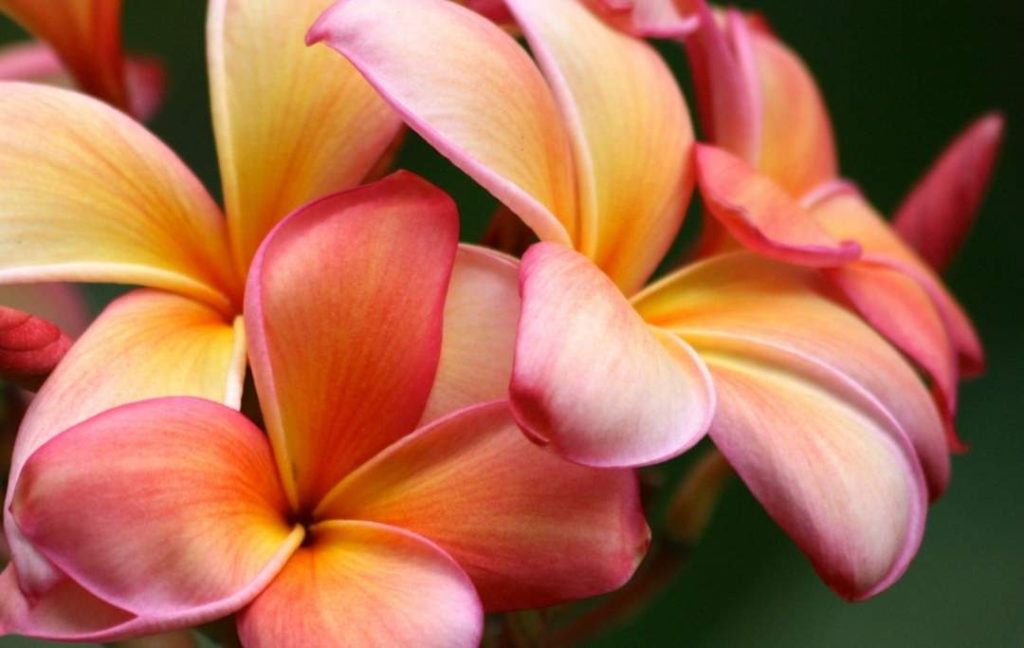
The gorgeous flowers of the plumeria plant have incredible fragrance. This plant comes in different shades such as red, yellow, white, pink, and orange.
Plumeria plants need full sun so you have to keep the pot near a sunny window so it thrives well. Use high-quality potting mix for growing plumeria plant and fertilizer it weekly with a water-soluble fertilizer. Make sure the fertilizer you are using contains nitrogen, phosphate, and potassium.
12- HELIOTROPE
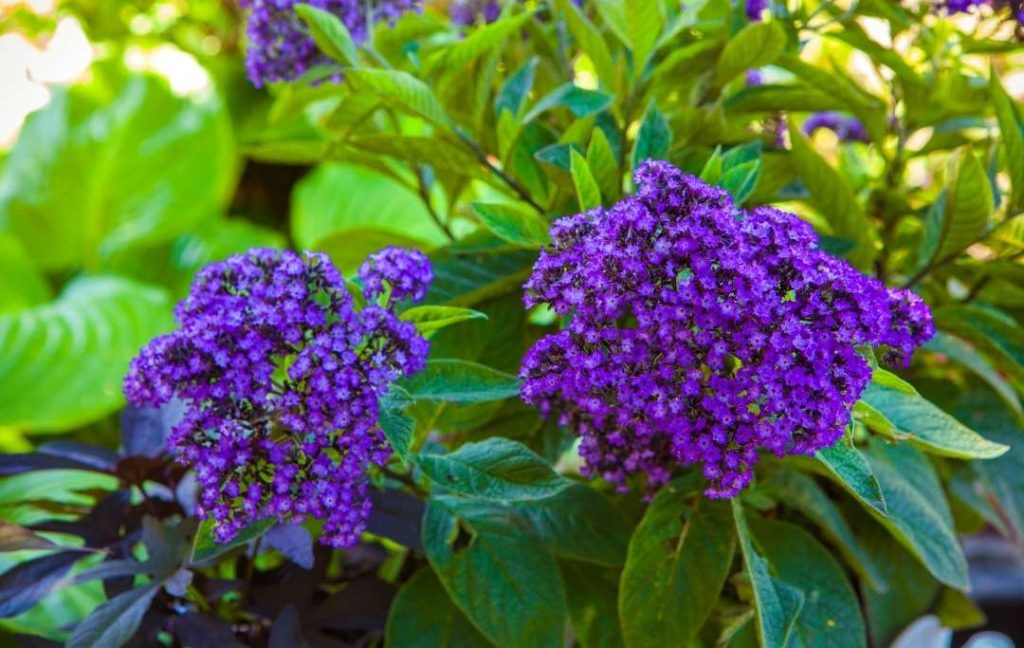
This is an impressive plant because of its scent that’s why we keep it on our list of best smelling indoor plants. When you add heliotrope to your home then they look wonderful and produce exotic scents like vanilla.
Use well-drained soil and fertilizers with dilute 20-20-20 fertilizer weekly during the growing season. Keep the soil moist with regular watering. You should maintain the frequency of water for your heliotrope plant but avoid overwatering.
Check the surface of the soil, if you feel it is dry then it means this is the time your plant needs water.
13- HOYA
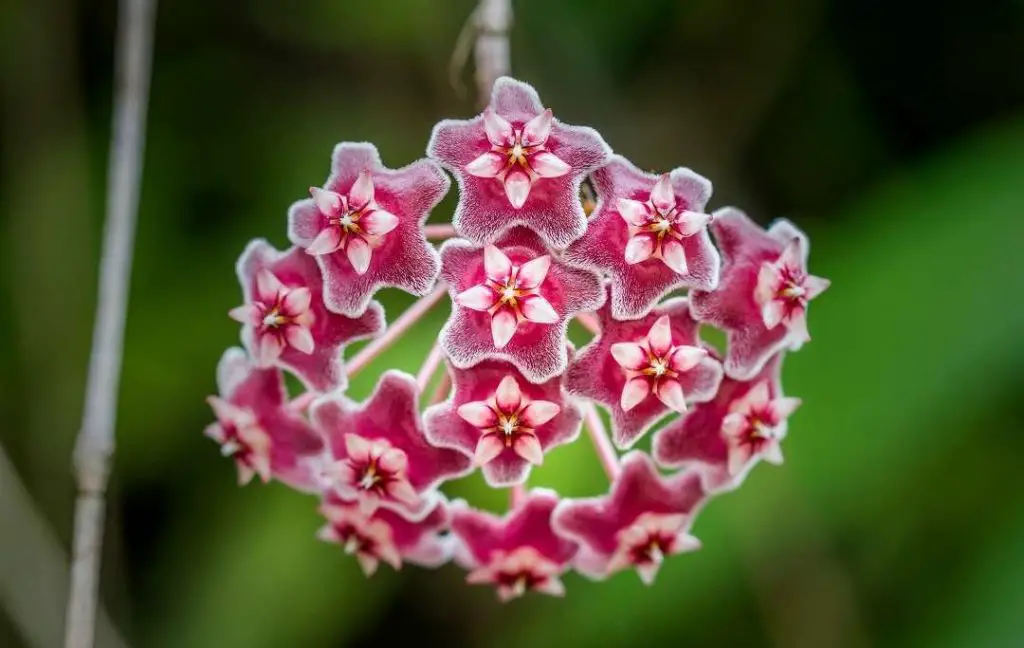
The other name for the hoya plant is wax plant because of its waxy green leaves. Umbrella-shaped flowers give sweet and fresh fragrance in the evening.
This plant needs little maintenance so you can easily grow it as a houseplant. Indirect sunlight is perfect for growing the hoya plant. The Hoya plant produces more blooms if it gets more bright light.
14- EUCALYPTUS
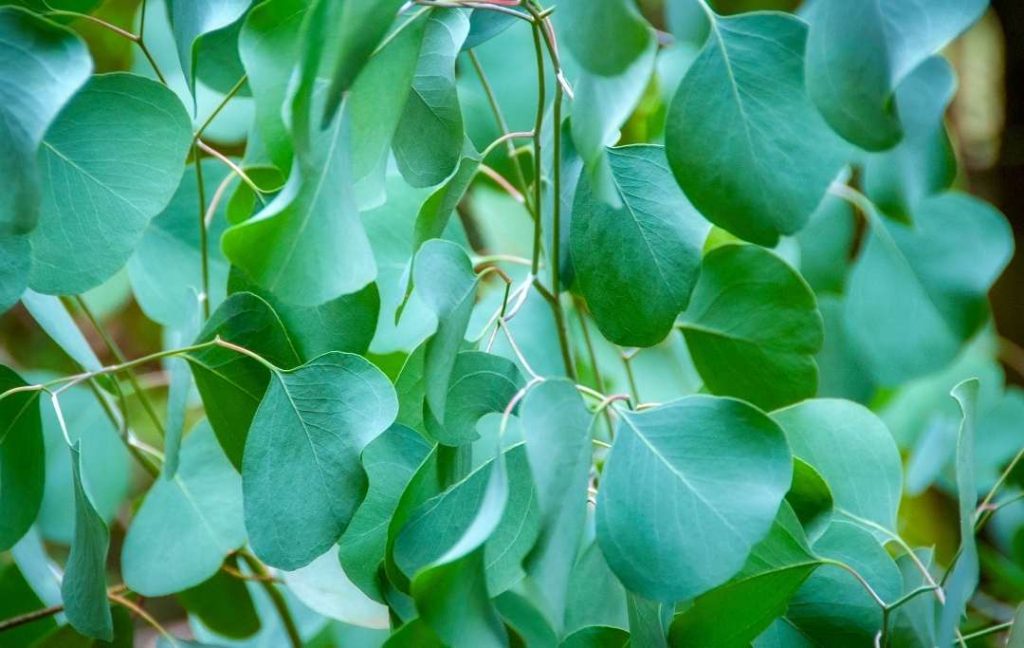
This plant produces a wonderful scent from its leaves. The leaves brighten up your room with a fresh fragrance. Loose and porous soil is perfect for eucalyptus as it drains quickly and your plant will be prevented from root rot and other fungal diseases.
A sunny window is a perfect place for your pot where it gets bright light for your eucalyptus plant. Moderate indoor temperature is perfect for growing eucalyptus plants. When the soil dries then it is time to water your plant. On cold days, your plants need less water.
15- ANGEL TRUMPET
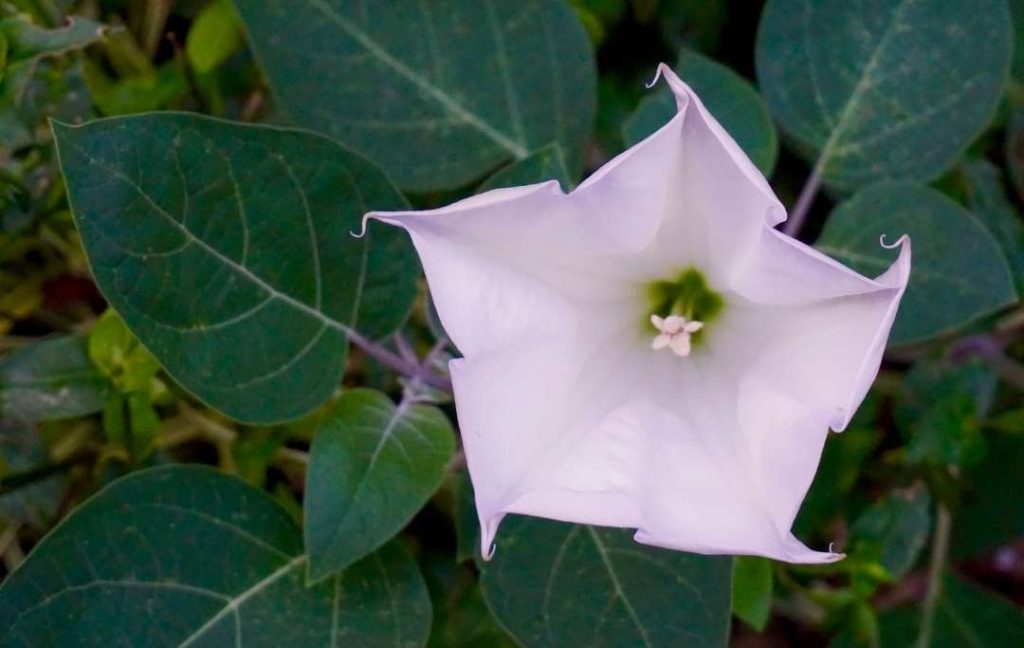
If you choose an angel trumpet as a houseplant then your room will be filled with incredible fragrance. The sweet smell of this plant makes it the perfect smelling house plant.
The astonishing trumpet-shaped flowers are outstanding and exceptional. When you grow it as an indoor plant then make sure you fulfill all the requirements such as lighting, watering temperature, and soil.
The suitable daytime temperature for growing angel trumpet is 75 degrees Fahrenheit or 23 degrees. The perfect temperature at night should be between 60 to 70 degrees Fahrenheit or 15 to 21 degrees centigrade.
Make sure you are using the best potting soil and your pot must have drainage holes at the bottom. Angel trumpet needs fertilizer once a week during spring and summer.
Keep the soil moist by regular watering but avoid overwatering. Less or more water can become the reason for many diseases in your plants. You should consider the requirement of water of your plant and water according to its need. Never let the soil dry out completely because it can damage your plant.
